The Ultimate Revolution and its Brave New World (second part) (English version at the end of this article)
Războaiele și revoluțiile au un mod de a aduce cu ele cele mai bizare idei și viziuni asupra lumii. Aceasta a fost și povestea secolului trecut. Când ideea unei noi ordini a reapărut ca subiect de discuție nu numai în rândul politicienilor, ci și-n cercurile tinerilor industriași și magnați ai marilor corporații, oamenilor de știință. Deci, a ceea ce numim în general „elita conducătoare”. O idee care străbate istoria ca un fir roșu și care e la fel de veche ca Revoluția Americană și Franceză.
Două planuri pentru o Nouă Europă
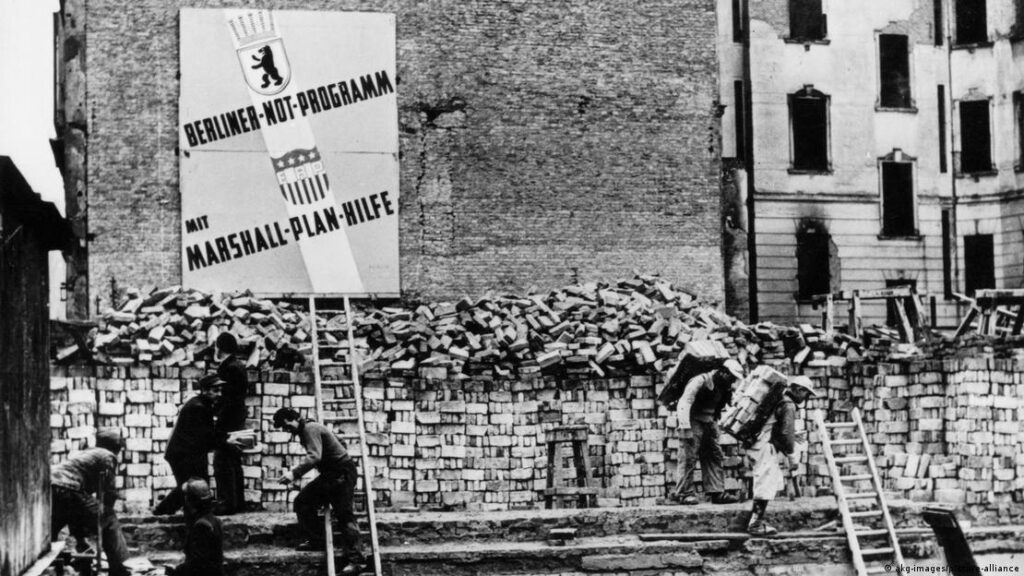
După cele două războaie mondiale, Europa, mai ales Germania, a fost devastată. Războiul perpetuu și revoluția eternă au lăsat orașele Berlin și Hessen ca fantomatice, sub un morman de moloz, ruine. În ciuda acestui fapt, oamenii încercau să-și reconstruiască casele și să înceapă viața din nou. Dar Hunger Winter i-a prins în frig și-n foamete, în proteste pentru pâine. „Wir wollen kohle, wir wollen brot!” („Vrem cărbune, vrem pâine!”) scandau pe străzile bântuite ca țăranii Revoluției Franceze (vezi Berlin and Potsdam 1945, și Hessen 1945, pe YouTube).
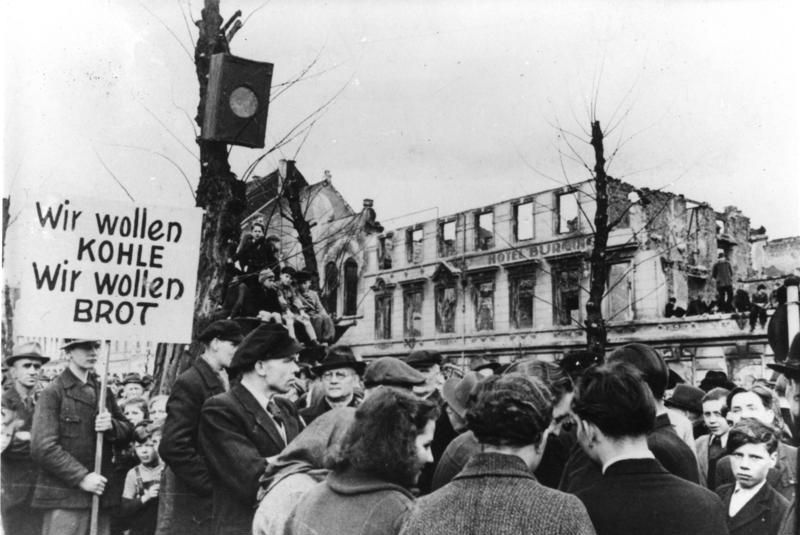
Această stare de urgență în care se afla Europa a atras atenția secretarului de stat american George Marshall. Care, într-un discurs la Universitatea Harvard din 5 iunie 1947, a propus ca națiunile europene să creeze un plan de reconstrucție economică cu sprijinul financiar al guvernului SUA. După spusele sale, programul ar fi fost conceput pentru a „pune Europa pe picioarele ei din punct de vedere economic” și pentru „a fi unul comun, agreat de un număr, dacă nu de toate națiunile europene” (vezi Marshall Plan (1948), pe HYPERLINK „https://www.archives.gov/milestone-documents/marshall-plan” https://www.archives.gov/milestone-documents/marshall-plan).
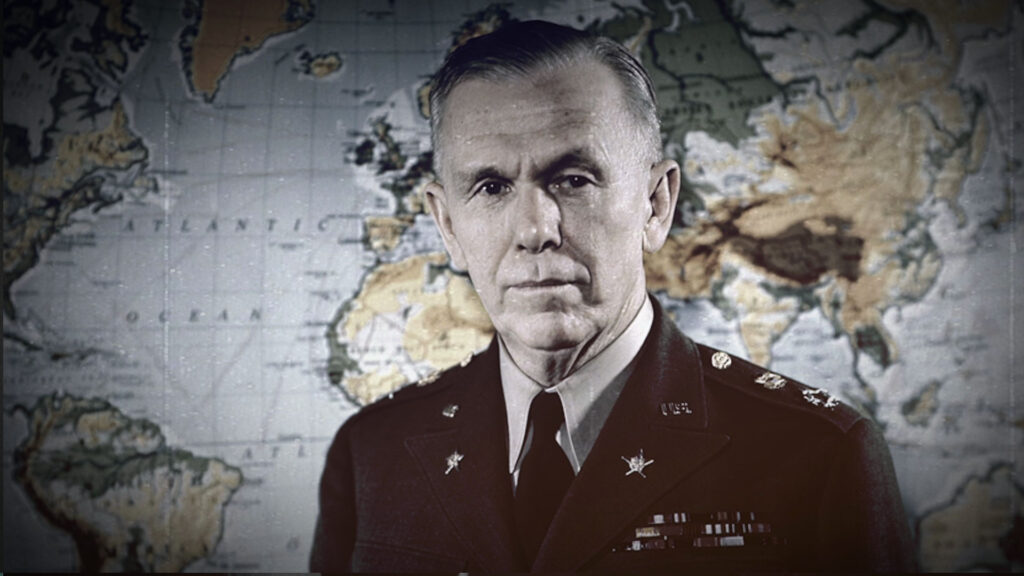
Pe 19 decembrie, președintele Harry Truman a transmis acest mesaj Congresului american, iar în anul următor, pe 3 aprilie, a semnat „Actul de cooperare economică din 1948”, cunoscut și sub numele de Planul Marshall după inițiatorul său. Potrivit Sec. 406 din acest proiect de lege, Corporația Financiară pentru Reconstrucție a autorizat și a direcționat împrumutul. Aceeași corporație guvernamentală care a ajutat China într-un Program de Reconstrucție Rurală și care a fost modelată după US War Finance Corporation of World War I (vezi Sec. 407, din The Marshall Plan (1948). Și Wikipedia, Reconstruction Finance Corporation, War Finance Corporation).
„Programul a fost un efort ambițios de ajutor extern și o demonstrație fără precedent a puterii globale SUA” (Ryan Metz). Aproape „60% din aceste fonduri au trebuit să fie investite în industrie și au jucat un rol central în reindustrializarea Germaniei. În 1949-1950, 40% din investițiile industriei germane pe cărbune au fost făcute prin aceste fonduri” ( HYPERLINK „https://beyondplanb.eu/projects/project_marshall_plan.html” https://beyondplanb.eu/projects/project_marshall_plan.html). Desigur, rămâne întrebarea istorică de ce aliații care au intrat atât de târziu în război au fost atât de dornici să ajute. Care era miza lor?
SUA a finanțat nu numai un program de redresare economică pentru Europa de Vest, cât și o viziune. La sfârșitul celui de-al Doilea Război Mondial, două temeri pluteau în aer. Una că Uniunea Sovietică ar putea câștiga mai mult teren în fața celorlalte puteri, iar cealaltă că Germania ar putea începe un alt război. Prin urmare, trebuia conturată o viziune împotriva răspândirii comunismului sovietic, pentru pace și economie durabilă. Aceasta implica exportarea „stilului de viață american” în Europa și modelarea ei într-o confederație de state (Timeline, Jul 30, 2020).
Ideea transformării Europei într-o Zonă Internațională sub guvernarea Națiunilor Unite a fost propusă mult mai devreme de secretarul Trezoreriei Henry Morgenthau Jr. președintelui Franklin D. Roosevelt. După moartea lui Roosevelt, Harry Truman a respins planul lui Morgenthau. Însă este fără îndoială că ambele planuri, Marshall și Morgenthau, au modelat puțin UE așa cum o cunoaștem astăzi (Roosevelt Papers. De asemenea, Wikipedia, International Authority for the Ruhr).
Viziunea Clubului de la Roma pentru un guvern mondial
America avea oamenii ei vizionari și zeii industriali, dar și Roma i-a avut. Un astfel de om era Aurelio Peccei. Dacă Henry Ford era părintele Ford Motor și al liniei de asamblare din America, atunci managerul companiei Fiat a fost părintele primei revoluții globale.
Pe lângă faptul că a fost președintele interimar al Olivetti – un producător italian de calculatoare și tehnologii inteligente – și a dezvoltat mediul de afaceri din America Latină prin noua Companie de Investiții ADELA (Atlantic Development of Latin America), Aurelio Peccei a rămas cunoscut în istorie dintr-un singur motiv. Pentru că a fost unul dintre membrii fondatori ai Clubului de la Roma și promotorul viziunii purtate cu ei.
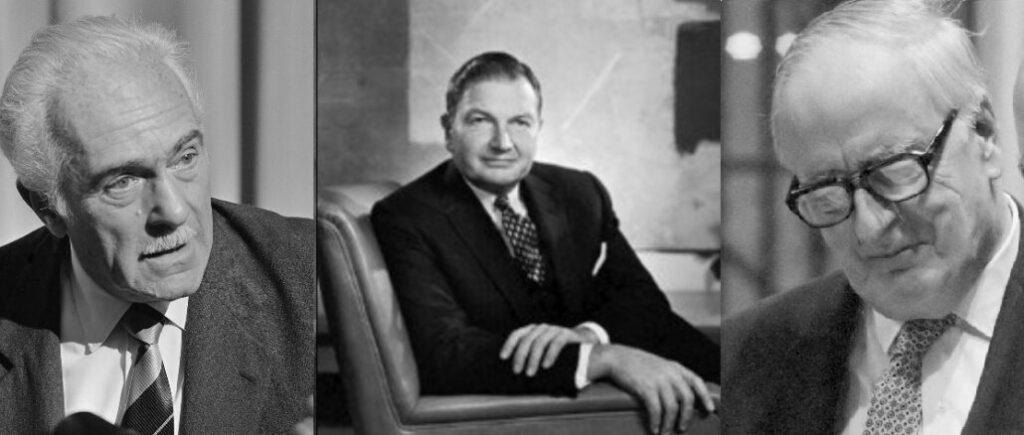
Oficial, se admite că Clubul a fost înființat în septembrie 1968 la Vila Farnesina din Roma, „sediul Academiei dei Lincei, cea mai veche academie de științe existentă încă, Academia lui Gallileo”, de unde provine numele său. Dar, după cum vom vedea, originea Clubului ar putea fi desprinsă și dintr-o altă întâlnire ținută cu trei ani mai devreme la Villa Serbelloni din Bellagio (vezi Alexander King în Club of Rome, DOSSIERS 1965-1984: THE LAUNCH OF A CLUB, pe HYPERLINK „http://clubofrome.fi/wp-content/uploads/2014/10/Dossiers.pdf” http://clubofrome.fi/wp-content/uploads/2014/10/Dossiers.pdf).
Fără un buget propriu și o constituție oficială, Clubul părea de la bun început ca un club elitist. Formând o comunitate restrânsă, exclusivă de oameni de știință, în cea mai mare parte ascunsă de ochiul publicului și întâlnindu-se în secret, întocmai ca „înțelepții” Colegiului Invizibil din Noua Atlantidă a lui Francis Bacon. Alexander King, un alt membru fondator, l-a comparat cu grupul mic de oameni de știință, industriași și filozofi ai Societății Lunare din Birmingham de la sfârșitul secolului al XVIII-lea, care a declanșat Revoluția Industrială (Ibid., pp. 33, 35, și 55).
„Conferința privind condițiile ordinii mondiale” de la Bellagio
Dintre evenimentele secolului trecut care au modelat Noua Ordine Mondială, se cunosc prea puține despre „Conferința privind condițiile ordinii mondiale” desfășurată în perioada 12-19 iunie 1965, la Villa Serbelloni din Bellagio. Sponsorizată de Congresul pentru Libertate Culturală (cu un grant din partea Fundației Ford și a Academiei Americane de Arte și Științe), Conferința a reunit într-un singur loc istoric savanți, scriitori și oameni de știință din întreaga lume pentru a defini conceptul de „ordine mondială” (Justin Malonson, DEEP STATE AGENDA: Conspiracy Facts, Chapter 4).
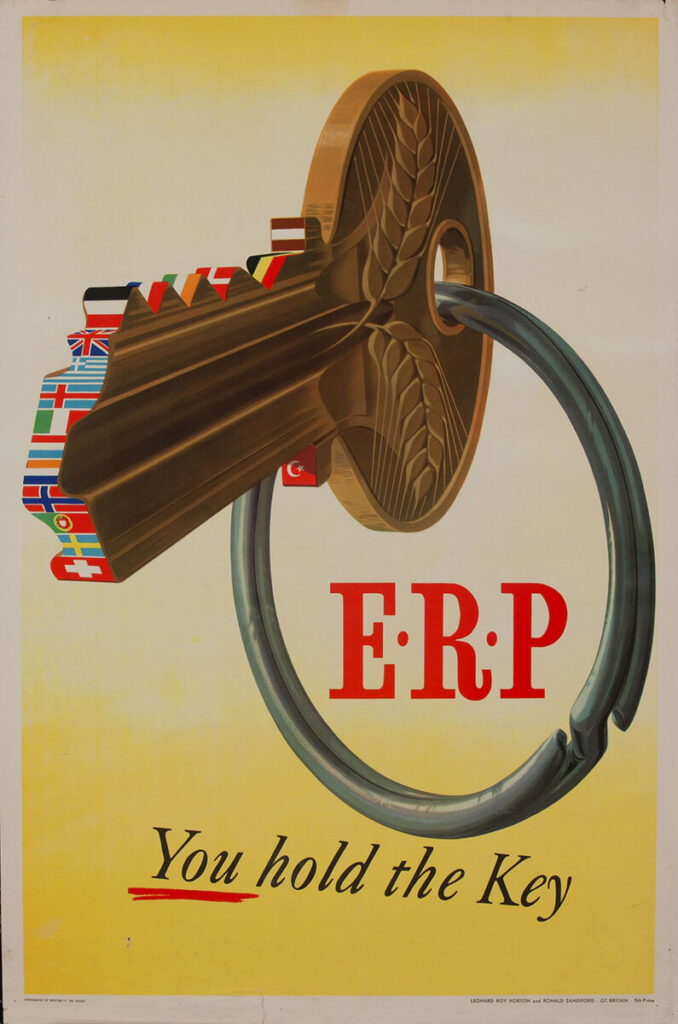
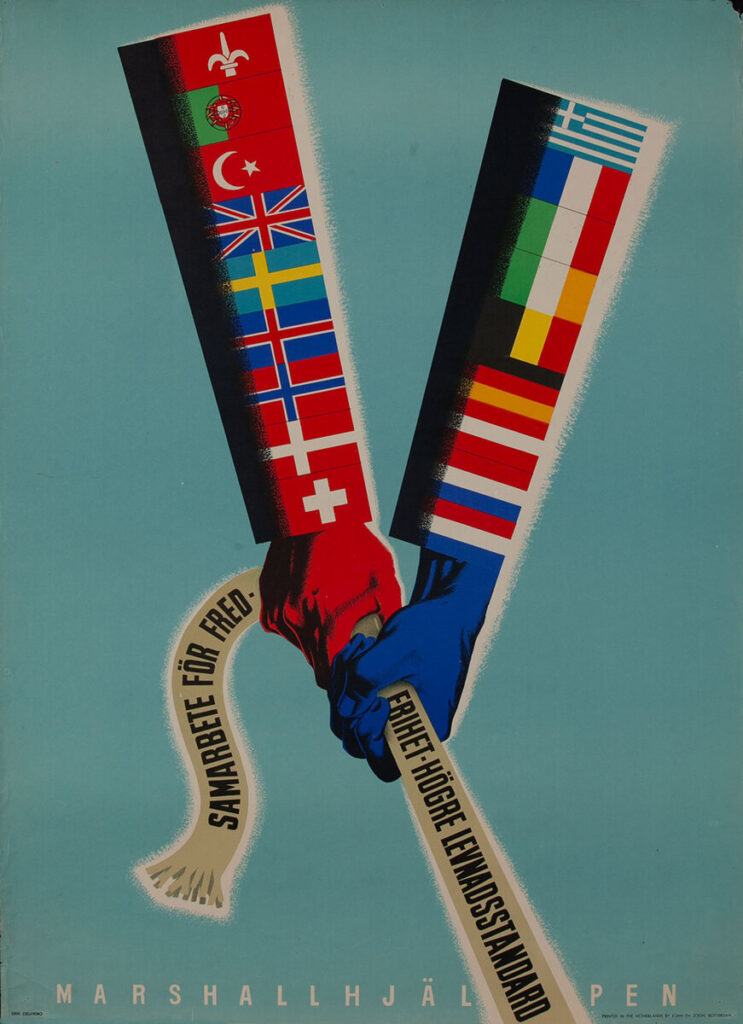
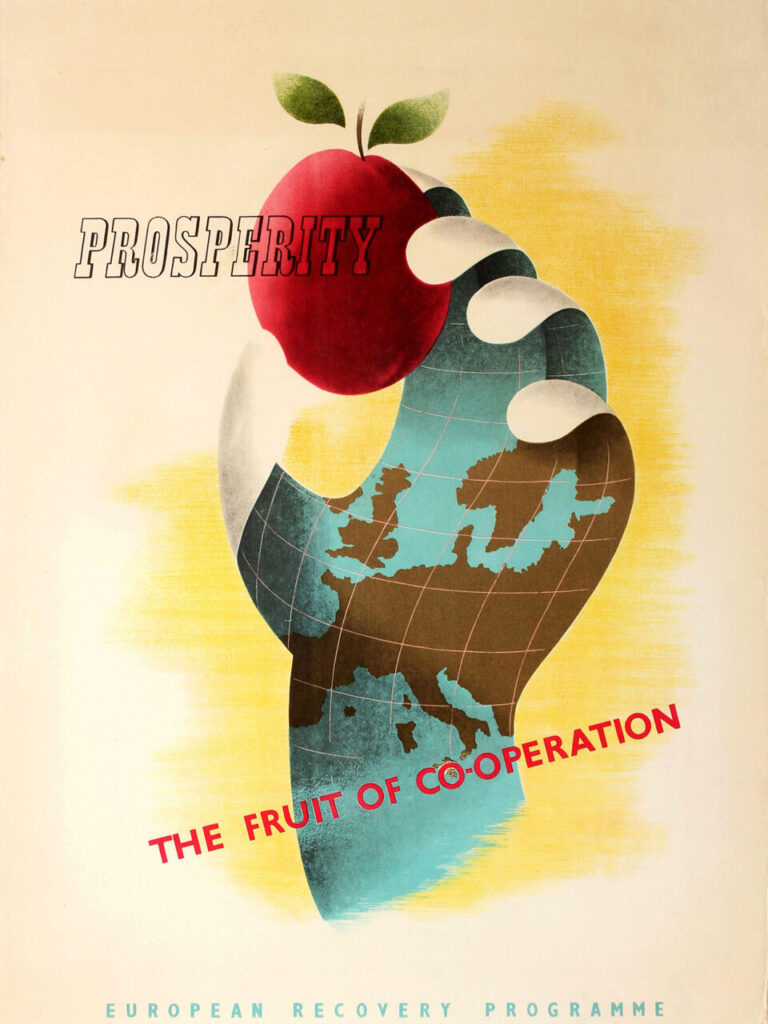
În pofida prezenței la nivel înalt, nu părea a fi un eveniment public. Mai curând o întâlnire privată găzduită de Villa Serbelloni – cunoscută și sub numele de Castelul Bellagio. Istoria ne spune că vechiul castel a servit drept reședință pentru Alexander Karl von Thurn und Taxis, prinț al Imperiului Roman, și pentru soția sa, Ella Walker. După ce au murit, a intrat sub patronajul Fundației Rockefeller și a găzduit de atunci multe conferințe pentru un număr limitat de persoane. Doar revista academică Dædalus a făcut cunoscut evenimentul care în 1966 când a fost publicat pentru prima dată conținutul său avea aceeași circulație restrânsă (vezi Wikipedia, Villa Serbelloni. De asemenea HYPERLINK „https://www.rockefellerfoundation.org/bellagio-center/” https://www.rockefellerfoundation.org/bellagio-center/).
Rând pe rând, „compozitorii” au preluat discursul și au oferit o cheie pentru simfonia lor, o operă de ordin nou scrisă în stilul wagnerian parsifal. Istoricul și filozoful francez Raymond Aron, profesorul și filozoful german Hans-Georg Gadamer, Lordul Gladwyn, Henry Kissinger, Ambasadorul Pietro Quaroni (ambasadorul Italiei la Londra), Conrad Hal Waddington (mai târziu membru fondator al Clubului), domnul Stephen R. Graubard (editorul revistei Dædalus), Daniel Patrick O’Connell (avocat și universitar din Noua Zeelandă, specializat în drept internațional), profesorii Jean Fourastié și Jan Tinbergen, au fost câțiva dintre participanți.
Raymond Aron a organizat Conferința, iar Stanley Hoffmann a jucat rolul de secretar:
„Sub președinția și îndrumarea lui Raymond Aron, cei douăzeci și unu de oameni care s-au întâlnit la Bellagio între 12 și 19 iunie pentru a defini condițiile ordinii mondiale au participat la un experiment dublu. Unul era intelectual? Încercarea de a discuta atât șansele, cât și obstacolele din calea ordinii mondiale așa cum apăreau în 1965” (Stanley Hoffmann). „În iunie 1965, atât Lordul Gladwyn, cât și Henry Kissinger au participat la Conferința Serbellino privind condițiile ordinii mondiale, organizată de politologul, jurnalistul și filozoful francez Raymond Aron. Întâlnirea a reunit un grup select de teoreticieni și vechi practicanți, iar lucrările au fost înregistrate de Stanley Hoffman, unul dintre colegii lui Kissinger la Harvard” (John Bew).
Întrebarea este dacă experimentul rămâne unul pur descriptiv sau devine după întâlnire „o întreprindere în psihologia colectivă”, „un fel de psihodramă” pusă în scenă?
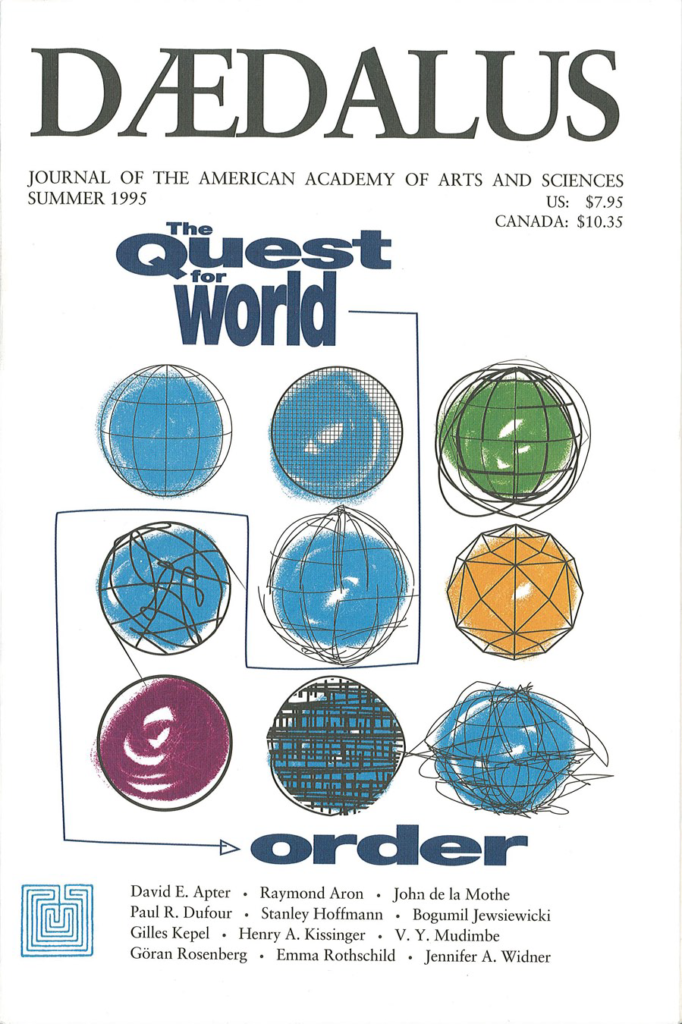
După cum urmează să vedem, nu a fost un simplu joc intelectual. Seminarul a acoperit diverse subiecte, toate dezbătute în jurul temei centrale a „ordinii mondiale” precum soarta statului-națiune, „raționalitatea operațională”, declinul vechii metafizici și necesitatea unui sistem comun de valori, apariția unui nou umanism modelat de credința dogmatică în progresul universal al științei etc.
Sensul ordinii propus de Aron privea condițiile care au făcut-o până atunci. Puteau avea legătură cu planurile Marshall și Morgenthau? Alți participanți de la seminar s-au preocupat mai mult de a găsi modalitățile pentru depășirea a ceea ce exista deja ca ordine mondială în 1965 sau ce ar putea rezulta dintr-o continuare a tendințelor actuale. Cu toții au fost totuși de acord că „ordinea mondială” înseamnă mai mult decât relații interstatale și că aceasta ar fi afectată de structurile interne ale statelor naționale și de fenomenele transnaționale.
„Este statul-națiune o formă de organizare socială care poate persista? Este un obstacol în calea ordinii mondiale? Dacă da, cum poate fi depășit?” Elita a fost de acord cu faptul că soarta statului-națiune ajunsese la sfârșit. Și că astăzi reprezintă cea mai mare amenințare la adresa păcii și a ordinii mondiale. Henry Kissinger i-a contestat legitimitatea „din pricina eterogenității liderilor care trebuie să coexiste pentru prima dată într-un singur sistem internațional”, în timp ce Lordul Gladwyn îl critică ca fiind un „factor al anarhiei” (Stanley Hoffmann, pp. 4, 5-6).
Diplomatul britanic Gladwyn Jebb, care a servit ca secretar general al Națiunilor Unite, a sugerat că ordinea mondială putea fi realizată în două etape. Prima era legată de mișcarea de integrare paneuropeană și de transformarea Europei într-un stat federal la fel ca SUA:
„El a văzut în metoda supranațională o invenție admirabilă pentru înlocuirea statului-națiune, iar în integrarea europeană (odată ce Marea Britanie este inclusă) o modalitate de a înlătura una dintre principalele surse de tensiune din lume, permițând eliberarea ambelor superputeri din Europa și pentru reunificarea Europei de Vest și de Est (fără Rusia)” (Ibid., p. 8).
A doua etapă a fost o pledoarie pentru extinderea în alte părți ale lumii a regionalismului prin împrumutarea modelului european, pentru care a sugerat crearea unui Consiliu Mondial cu un număr limitat de membri.
Raymond Aron și domnul Hélio Jaguaribe au subliniat rolurile intelectualilor în stabilirea ordinii internaționale, precum și pentru crearea utopilor. Ei ar fi ca „noua preoție” a comunității oamenilor de știință căreia i-a fost încredințată sarcina sacră de a promova triumful „raționalității operaționale”, pentru crearea de dogme pentru mase și a unui nou set de valori (Ibid., pp. 20-21).
Aceste valori ar fi noile valori ale unei lumi unificate prin progresul material pentru o viață mai bună. Care n-ar fi rezultatul unui proces istoric (ca la Karl Marx), ci mai degrabă un scop ales în mod deliberat, cum a spus-o profesorul Conrad Hal Waddington. Așadar, valorile materiale ale unei lumi capitaliste ce ar înlocui vechile sisteme de ordonare a lumii bazate pe elemente spirituale pentru care par să fi eșuat. Valori interșanjabile la fel de fluide precum capitalul în jurul căruia gravitează care-și pierd orice adâncime interioară. Pentru o nouă ordine care nu este statică, ci mult mai dinamică și pe care el o numește „homeorhesis”, o noțiune dinamică preluată din biologie (Ibid., p. 12. De asemenea, vezi Wikipedia, Homeorhesis).
Ideea de „ordine mondială” are o tradiție mult mai lungă în timp însă decât cea care precede și transcende epoca unică a planificării postbelice din 1939-45 și a apărut pe curentul gândirii anglo-americane cu mai bine de 100 de ani în urmă (John Bew).
Seminarul s-a încheiat cu o scurtă referire la filosofia ordinii a lui Kant, care a prezis într-unul dintre eseurile sale că „lumea națiunilor se va uni ca urmare a procesului negativ al războaielor din ce în ce mai costisitoare și a procesului pozitiv al creșterii interdependenței lor materiale” (probabil o trimitere făcută la „Ideea pentru o istorie universală cu un scop cosmopolit” sau „Plan”). Prin urmare, dacă apare o nouă ordine „homeorhetică”, aceasta va fi în acest sens.
„Provocarea anilor 1970 pentru lumea de astăzi” din Buenos Aires
Aurelio Peccei nu a participat la Conferința de la Bellagio. Dar pe 27 septembrie a aceluiași an a susținut o prelegere intitulată „Provocarea anilor 1970 pentru lumea de astăzi” la Colegiul Militar Național din Buenos Aires. Fără îndoială, prelegerea sa și Conferința Bellagio din iunie ’65 au dus la înființarea Clubului de la Roma și-au contribuit la noua ordine internațională.
El începe prelegerea citând dintr-un studiu publicat de Institutul de Cercetare Stanford („The World in 1975”): „Tehnologia științifică modernă aduce sub control forțe care rivalizează cu cele ale naturii însăși: angajându-le, omul își poate inventa propriul viitor. Acum este în puterea lui să creeze o lume în mod substanțial fără lipsuri, trudă, și boli. De asemenea, este posibil să modeleze o tiranie perfectă sau să elimine viața complet. Direcția luată depinde de eficiența omului de a pune capacitatea științifică și tehnică în controlul rațiunii și de a o îndrepta spre scopuri bune” (vezi prelegerea lui Aurelio Peccei, în Club of Rome, DOSSIERS 1965-1984, p. 4).
Și continuă cu remarca:
„În istoria umanității, se pot identifica faze lungi de evoluție lentă întrerupte de perioade de schimbări intense care pot fi comparate cu mutațiile din viața speciei. Când descoperirea de noi metode tehnice a făcut o comunitate mai puternică, aceasta a cucerit și a eliminat invariabil comunități sau rase vecine mai înapoiate. Fiecare dintre aceste etape în desfășurare, adesea despărțite unele de altele de mii de ani, au adus în mod necesar o schimbare corespunzătoare în ordinea socială” (Ibid.).
Mai departe exemplifică prin Revoluția Industrială care s-a răspândit pe scară largă în întreaga lume și a schimbat ordinea socială. De asemenea, prin invențiile epocii moderne, mașinile sale puternice destinate să înmulțească capacitatea de muncă a omului. Dar toate aceste schimbări sociale au creat un decalaj din ce în ce mai mare între națiunile industrializate bogate și țările subdezvoltate, bogați și săraci. Cum sălbaticii din lumea a treia își pot menține pașii alături de ei? Cum ar putea cei care nu fuseseră niciodată atinși de „miracolul industrial” și nu s-au bucurat niciodată de „minunile” acestei Lumi Noi să-i ajungă din urmă?
Ei bine, cei care au fost mereu identificați sub aspectul negativului din cauza vechii lor faze de stagnare și a incapacității lor de a progresa pur și simplu nu pot. Sau, mai bine spus, se crede și se spune că nu pot. Fapt care a dus la unele dintre cele mai grave probleme ale vremurilor noastre care, după Aurelio Peccei, pot fi rezolvate doar printr-o revoluție tehnologică globală.
Negativul poate fi transformat în pozitiv numai prin preluarea unui alt model, și anume cel considerat de elită ca fiind autentic. Chiar dacă aceasta presupune renunțarea la propria identitate și dobândirea unei alte identități considerate a fi superioară și mult mai reală.
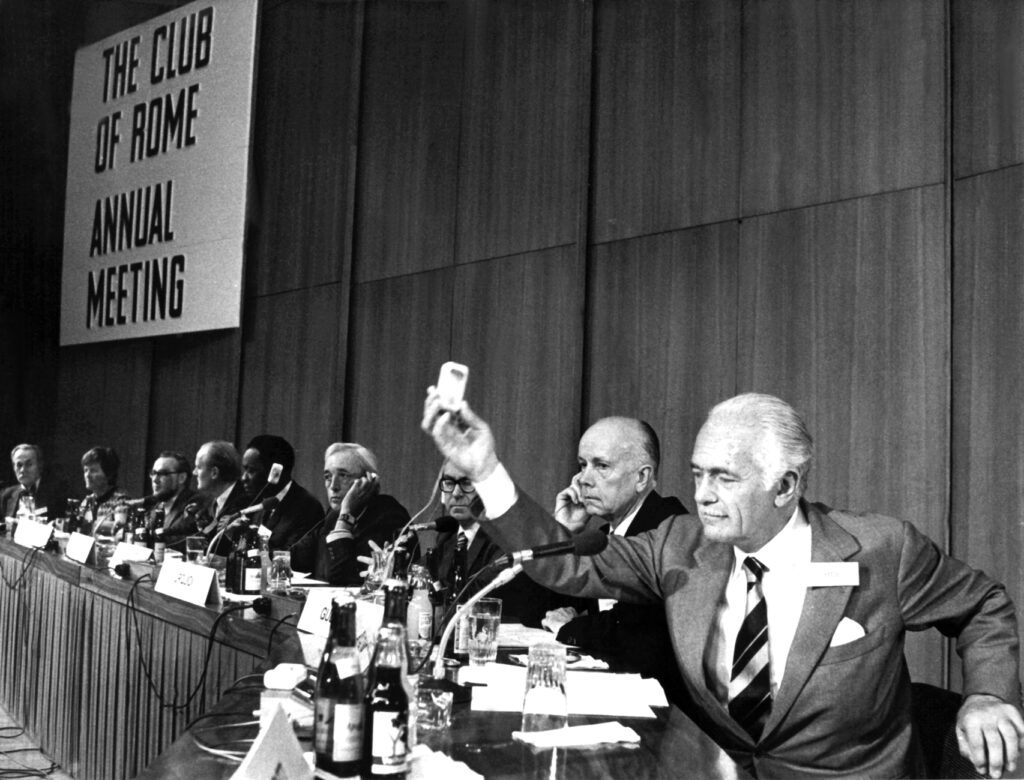
Pentru Aurelio Peccei, lumea reală este prima lume. Reprezentată în mare parte de societatea Nord-americană, superioară și diferită de alte țări industrializate. Caracterizată printr-un dinamism extraordinar, progres tehnologic și printr-o eficiență organizațională. În jurul căreia gravitează toate celelalte țări avansate industrial, alături de țările din lumea a doua și a treia.
„Prima lume este formată din vreo douăzeci de țări definite de Națiunile Unite ca fiind avansate din punct de vedere industrial: sunt cele cu o economie de piață dezvoltată, plus alte câteva care gravitează în jurul lor. Nucleul principal cuprinde comunitățile stabilite în zonele continentale privilegiate de pe ambele părți ale Atlanticului de Nord și care posedă o bază culturală omogenă ce își are rădăcinile în filosofia greacă, dreptul roman, în inspirația etico-religioasă creștină, în limbile latină și de derivație anglo-saxonă” (p. 6).
Fie că vor sau nu celelalte țări trebuie să îmbrățișeze modelul celor mai avansate națiuni, să preia modelul american. Aurelio Peccei a exprimat acest lucru fără echivoc spunând: „Să fim destul de clari: adevărații lideri în această efervescență sunt Statele Unite, în timp ce celelalte țări au roluri mai mici, sau altfel nu sunt mai mult decât spectatori” (DOSSIERS 1965-1984, p. 7).
Astăzi, acest lucru este un fapt împlinit. Europa a fost transformată într-o confederație de state după modelul american, ceea ce a întărit și mai mult parteneriatul Nord-Atlantic. Iar sălbaticii din lumea a treia aproape că au renunțat la propria identitate și s-au transformat în „mici englezi”. Un exemplu în această direcție îl oferă Uniunea Africană care a transformat comunitățile sale în sensul modern al cuvântului așa cum și-a fi dorit-o Peccei.
Scopul revoluției tehnologice este tocmai acesta: de a moderniza comunitățile tribale din lumea a treia, pe lângă rezolvarea unor probleme precum suprapopularea, foametea, bolile și distribuirea bogăției pentru a dobândi într-un singur cuvânt „prosperitatea” pentru toate națiunile. Dar a crede că elita s-ar comporta ca un fel de Robin Hood care ar lua de la bogați și ar da celor săraci în numele justiției sociale pare un basm foarte frumos, totuși neadevărat, ireal. Atunci să nu ne lăsăm amăgiți sau îmbătați c-un pahar cu apă întrucât o „viață mai bună” nu-i pentru toată lumea.
Acest lucru a fost exprimat foarte clar la Conferința de la Bellagio când s-a vorbit despre „raționalitatea operațională” care a adus o schimbare decisivă în procesul de însuşire a bogăţiei, influenţei şi puterii. Când s-a spus că istoria încetează să mai fie un joc cu sumă zero și devine mai mult un joc asupra naturii, pentru organizare și dominare (Stanley Hoffmann, p. 5).
Voința de dominare a celor neprivilegiați și de posedare a resurselor lor naturale a fost văzută și-n aventurile acestui cavaler al Regatului Întunecat, Bill Gates, care a adus doar moartea neagră pe continentul african. O politică care seamănă mai curând c-un fel de joc pentru jefuire practicat de elita conducătoare de secole în căutarea bogățiilor, nestematelor și a aurului. De când Cristofor Columb a descoperit Lumea Nouă sau mai târziu, Cecil John Rhodes, câmpurile de diamante din Africa. Să nu uităm de Compania Britanică a Indiilor de Est (vezi John Coleman, The Committee of 300. The Ruling Oligarchy. De asemenea, Club Of Rome and The Committee of 300, pe HYPERLINK „https://www.youtube.com/watch?v=fEu9GFJIw8g&list=PLFD3A8B355CD6DF06&index=5” https://www.youtube.com/watch?v=fEu9GFJIw8g&list=PLFD3A8B355CD6DF06&index=5).
Trucul din acest joc de dominare este că lumea a patra – Republica Mondială a lui H.G. Wells sau Brave New World a lui Aldous Huxley – le va înghiți pe celelalte într-una. Astfel, această lume sau societate perfectă fără lipsuri, corvoadă și boli e un miraj care ar putea cădea într-o tiranie sau dictatură perfectă, așa cum a arătat foarte bine Huxley în Brave New World.
Ana-Maria Caminski
Corespondent in Romania, pentru NASUL TV Canada
The Ultimate Revolution and its Brave New World (second part)
Wars and revolutions have a way of bringing with them the most bizarre ideas and worldviews. This was also the story of the last century. When the idea of a new order reappeared as a topic of discussion not only among politicians but also in the circles of young industrialists and magnates of large corporations, scientists. So, of what we generally call the ‘ruling elite’. An idea that runs through history like a red wire and which is as old as the American and French Revolutions.
Two Plans for a New Europe
After the two world wars, Europe, mostly Germany, was devastated. The Perpetual War and Eternal Revolution left the cities of Berlin and Hessen ghostly-like, under a heap of rubble, ruins. Despite this, people were trying to rebuild their homes and start life afresh. But Hunger Winter caught them in cold and famine, protests for bread. ‘Wir wollen kohle, wir wollen brot!’ (‘We want coal, we want bread!’) were chanting on the haunted streets like the peasants of the French Revolution (see Berlin and Potsdam 1945, and Hessen 1945, on YouTube).
This state of emergency in which Europe found itself drew the attention of US Secretary of State George Marshall. Who, in a speech at Harvard University on June 5, 1947, proposed that European nations should create a plan for their economic reconstruction with the financial support of the US government. After his words, the program would have been conceived in order ‘to place Europe on its feet economically’ and to be ‘a joint one, agreed to by a number, if not all European nations’ (see the Marshall Plan (1948), on HYPERLINK „https://www.archives.gov/milestone-documents/marshall-plan” https://www.archives.gov/milestone-documents/marshall-plan).
On 19th December, President Harry Truman conveyed this message to the US Congress, and the following year, on April 3, he signed the ‘Economic Cooperation Act of 1948’, also known as the Marshall Plan after its originator. According to Sec. 406 of this bill, the Reconstruction Finance Corporation (RFC) authorized and directed the borrowing. The same government corporation that helped China in a Programme of Rural Reconstruction and that has been modeled after the US War Finance Corporation of World War I (see Sec. 407 of the Marshall Plan (1948). Also Wikipedia, Reconstruction Finance Corporation and War Finance Corporation).
“The program was an ambitious foreign aid effort and an unprecedented display of U.S. global power” (Ryan Metz). Almost “60% of these funds had to be invested in industry and played a central role in the reindustrialization of Germany. In 1949–50, 40% of the investment of the German coal industry was made by these funds” (see HYPERLINK „https://beyondplanb.eu/projects/project_marshall_plan.html” https://beyondplanb.eu/projects/project_marshall_plan.html). Of course, it remains the historical question of why the Allies who entered the war so late were so eager to help. What was their stake?
US financed not only an economic recovery program for Western Europe but also a world vision. At the end of WWII, two fears were floating in the air. One was that the Soviet Union might gain more ground in front of the other powers, and the other was that Germany could start another war. Therefore, it had to be outlined a vision against the spreading of Soviet Communism, for sustainable peace and economy. This involved the exporting of the ‘American Way of Life’ in Europe and shaping after into a confederation of states (Timeline, Jul 30, 2020).
The idea of transforming Europe into an International Zone under the governance of the United Nations was much earlier proposed by Secretary of the Treasury Henry Morgenthau Jr. to President Franklin D. Roosevelt. After Roosevelt died, Harry Truman rejected Morgenthau’s Plan. There is no doubt that both plans, Marshall and Morgenthau, have shaped a little bit EU as we know it today (Roosevelt Papers. Also Wikipedia, International Authority for the Ruhr).
Club of Rome’s vision for a world government
America had her visionary men and industrial gods but Rome had them too. Such a man was Aurelio Peccei. If Henry Ford was the Father of Ford Motor and the assembly line in America, then the Manager of the Fiat Company was the Father of the First Global Revolution.
Besides the fact that he was the Interim President of Olivetti – an Italian manufacturer of computers and smart technologies – and developed the business environment in Latin America through the new Investment Company ADELA (Atlantic Development of Latin America), Aurelio Peccei has remained known in history for one reason. For being one of the founding members of the Club of Rome and the promotor of the vision carried out with them.
Officially, it’s admitted that the Club was founded on September 1968 at Villa Farnesina in Rome, “the seat of the Academia dei Lincei, the oldest academy of sciences still extant, the Academy of Gallileo”, from where his name came from. But, as we shall see, the origin of the Club might be detached as well from another meeting held three years earlier at Villa Serbelloni from Bellagio (see Alexander King in the Club of Rome, DOSSIERS 1965-1984: THE LAUNCH OF A CLUB, on HYPERLINK „http://clubofrome.fi/wp-content/uploads/2014/10/Dossiers.pdf” http://clubofrome.fi/wp-content/uploads/2014/10/Dossiers.pdf).
Without a budget of his own and a formal constitution, the Club looked like an elitist club from the very beginning. Forming a limited, exclusive community of scientists, mostly hidden from the public eye and meeting in secrecy, they were just like the ‘wise men’ of the Invisible College of Francis Bacon’s New Atlantis. Alexander King, another founding member, compared it with the small group of scientists, industrialists, and philosophers of the Lunar Society of Birmingham of the late 18th century, who triggered the Industrial Revolution (Ibid., pp. 33, 35, and 55).
‘Conference on Conditions of World Order’ of Bellagio
From the past century events that shaped the New World Order, too little is known about the ‘Conference on Conditions of World Order’ held on June 12-19, 1965, at Villa Serbelloni in Bellagio. Sponsored by the Congress for Cultural Freedom (with a grant from the Ford Foundation and the American Academy of Arts and Sciences), the Conference gathered in one historical place scholars, writers, and scientists from all over the world in order to define the concept of ‘world order’ (see Justin Malonson, DEEP STATE AGENDA: Conspiracy Facts, Chapter 4).
Despite the high-level attendance, did not seem to be a public event. Rather a private meeting hosted by Villa Serbelloni – also known as Bellagio Castle. History tells us that the old castle served as a residence for Alexander Karl von Thurn und Taxis, a Roman Empire prince, and his wife, Ella Walker. After they passed away, it entered under the patronage of the Rockefeller Foundation and hosted ever since then many conferences for a limited number of people. Only the academic journal Dædalus made known the event which, in 1966, when the content of the conference was first published had the same restricted circulation (see Wikipedia, Villa Serbelloni. Also HYPERLINK „https://www.rockefellerfoundation.org/bellagio-center/” https://www.rockefellerfoundation.org/bellagio-center/).
One by one, the ‘composers’ took the speech and provided a key for their symphony, a new-order opera written in a Wagnerian Parsifal style. The historian and French philosopher Raymond Aron, the professor and German philosopher Hans-Georg Gadamer, Lord Gladwyn, Henry Kissinger, Ambassador Pietro Quaroni (Italian Ambassador to London), Conrad Hal Waddington (later a founder member of the Club), Mr. Stephen R. Graubard (the editor of the journal Dædalus), Daniel Patrick O’Connell (New Zealand barrister and academic, specializing in international law), the Professors Jean Fourastié and Jan Tinbergen, were a few of participants.
Raymond Aron organized the Conference, and Stanley Hoffmann played the role of the secretary:
“Under the chairmanship and guidance of Raymond Aron, the twenty-one men who met at Bellagio from June 12 to June 19 in order to define conditions of World Order participated in a double experiment. One was intellectual? The attempt to discuss both the chances for and the obstacles to world order as they appear in 1965” (Stanley Hoffmann). “In June 1965, both Lord Gladwyn and Henry Kissinger were at the Serbellino Conference on Conditions of World Order, organized by the French political scientist, journalist, and philosopher, Raymond Aron. The meeting brought together a select group of theorists and former practitioners, and the proceedings were recorded by Stanley Hoffman, one of Kissinger’s colleagues at Harvard” (John Bew).
The question is whether the experiment remains purely descriptive or becomes after the meeting ‘an enterprise in collective psychology’, ‘a psychodrama of sorts’ staged?
As we shall see, it was no mere intellectual game. The seminar covered various subjects, all debated around the central theme of ‘world order’, such as the fate of the nation-state, ‘operational rationality’, the decline of the old metaphysics and the need for a common system of values, the advent of a new humanism shaped by the dogmatic faith in the universal progress of science, etc.
The meaning of order proposed by Aron regarded the conditions that made it until then. Could those be related to the Marshall and Morgenthau Plans? Other participants from the seminar were concerned more with finding ways of going beyond what already existed as world order in 1965 or what might come out of a continuation of present trends. They all agreed however that ‘world order’ means more than interstate relations and that this would be affected by the domestic structures of the national states and transnational phenomena.
“Is the nation-state a form of social organization that is likely to persist? Is it an obstacle to world order? If so, how can it be overcome?” The elite agreed with the fact that the fate of the nation-state had come to an end. And that today it represents the greatest threat to peace and world order. Henry Kissinger even contested its legitimacy “due to the heterogeneity of the leaders who have to coexist for the first time in a single international system”, while Lord Gladwyn criticizes it as a ‘factor of anarchy’ (Stanley Hoffmann, pp. 4, 5-6).
The British diplomat Gladwyn Jebb, who served as a Secretary-General of the United Nations, suggested that the world order could be made in a two-stage. The first one was related to the Pan-European integration movement and transforming Europe into a federal state just like the U.S.:
“He saw in the supranational method an admirable invention for superseding the nation-state, and in European integration (once Britain is included) a way of removing one of the main sources of tension in the world, by allowing for the disengagement of both superpowers from Europe and for the reunification of Western and Eastern Europe (without Russia)” (Ibid., p. 8).
The second stage was a plea for the extension to other parts of the world of regionalism by borrowing the European model, for which he suggested the creation of a World Council with limited membership.
Raymond Aron and Mr. Hélio Jaguaribe emphasized the roles of the intellectuals in the establishment of the international order, as well as for the creation of utopias. They would be like the ‘new priesthood’ of the community of scientists to which has been entrusted the sacred task of promoting the triumph of ‘operational rationality’, for the creation of dogmas for the masses, and of a new set of values (Ibid., pp. 20-21).
These values would be the new values of a world unified through material progress for a better life. That won’t be the result of a historical process (as to Karl Marx) but rather a deliberately chosen goal, in the way Professor Conrad Hal Waddington has put it. So, the material values of a capitalist world which would replace the old systems of ordering the world based on spiritual elements for which they seem to have failed. Interchangeable values, as fluid as the capital around which they gravitate, which loses any inner depth. For a new order that is not static, but much more dynamic, and which he calls ‘homeorhesis’, a dynamic notion taken from biology (Ibid., p. 12. Also see Wikipedia, Homeorhesis).
Yet the idea of ‘world order’ has a much longer tradition in time than that which precedes and transcends the unique era of post-war planning from 1939-45 and it appeared on the current of Anglo-American thinking more than 100 years ago (John Bew).
The Seminar finished with a short reference to Kant’s philosophy of order, which predicted in one of his essays that “the world of nations would unite as a result of the negative process of increasingly costly wars and the positive process of their increasing material interdependence” (a reference made perhaps to the ‘Idea for a Universal History with a Cosmopolitan Purpose’ or ‘Plan’). Therefore, if a ‘homeorhetic’ new order emerges, it will be along those lines.
‘The challenge of 1970s for the world of today’ from Buenos Aires
Aurelio Peccei did not attend to the Bellagio Conference. But on 27th September of the same year, he gave a lecture entitled ‘The challenge of 1970s for the world of today’ at the National Military College in Buenos Aires. Undoubtedly, his lecture and the Bellagio Conference of June ’65 led to the establishment of the later Club of Rome and contributed to the new international order.
He begins the lecture by quoting from a study published by the Stanford Research Institute (‘The World in 1975’): “The modern scientific technology brings forces under control that rival those of nature itself: employing them, man can invent his own future. It is now in his power to create a world substantially without want, drudgery, and disease. It is also possible to fashion a perfect tyranny or eliminate life completely. The direction taken depends on man’s effectiveness in putting scientific and technical capacity in the control of reason, and directing it to good ends” (see Aurelio Peccei’s lecture, in the Club of Rome, DOSSIERS 1965-1984, p. 4).
And continues with the remarque:
“In the history of humanity, it is possible to identify long phases of slow evolution broken by periods of intense change which can be compared to the mutations in the life of the species. When the discovery of new technical methods made a community stronger, it invariably conquered and eliminated more backward neighboring communities or races. Each one of these stages in progress, often separated one from another by thousands of years, has necessarily brought about a corresponding change in the social order” (Ibid.).
Farther he exemplifies this through the Industrial Revolution that spread widely all over the world and changed the social order. Also, by the modern era’s inventions, its powerful machines destined to multiply man’s capacity for work. But all these social changes created a growing gap between wealthy industrialized nations and underdeveloped countries, rich and poor. How the savages from the third world can maintain their steps with them? How could those who had never been touched by the ‘industrial miracle’ and never enjoyed the ‘wonders’ of this Brave New World reach them behind?
Well, those who have been always identified under the negative aspect because of their old phase of stagnation and their incapacity to progress simply just can’t. Or, better said, it’s commonly believed and been said they can’t. Fact that led to some of the most serious problems of our times which, after Aurelio Peccei, can be solved only through a global technological revolution.
The negative can be transformed into a positive only by taking over another model, namely the one considered by the elite to be authentic. Even if this involves giving up one’s own identity and acquiring another identity considered to be superior and much more real.
For Aurelio Peccei, the real world is the first world. Mostly represented by the North American society, superior and different from other industrialized countries. Characterized by extraordinary dynamism, technological progress, and organizational efficiency. Around which gravitate all the other industrially advanced countries, alongside the countries from the second and third world.
“The first world is made up of some twenty countries defined by the United Nations as industrially advanced: they are those with a developed market economy, plus a few others which gravitate around them. The principal nucleus comprises the communities established in the privileged continental zones on either side of the North Atlantic and possessed of a homogenous cultural basis which has its roots in Greek philosophy, Roman law, in the Christian ethical-religious inspiration, in languages of Latin and Anglo-Saxon derivation” (p. 6).
Whether they want to or not, the other countries must embrace the model of the most advanced nations, to take over the American model. Aurelio Peccei has expressed this without any equivocation by saying: “Let us be quite clear: the real leaders in this effervescence are the United States, while the other countries have lesser roles, or else are no more than spectators” (DOSSIERS 1965-1984, p. 7).
Today, this is un fait accompli. Europe was turned into a confederation of states after the American model, a fact that strengthened the North Atlantic partnership even more. And the savages from the third world almost gave up their own identity and transformed into ‘little Englishmen’. An example in this direction is offered by the African Union (AU) which turned the Afro-communities in the modern sense of the word as Peccei wanted.
The purpose of the technological revolution is precisely this: to modernize the tribal communities from the third world, besides solving problems like overpopulation, famine, disease, and distribution of wealth to acquire in one word ‘prosperity’ for all nations. But to believe that the elite would act like some kind of Robin Hood who would take from the rich and give to the poor ones in the name of social justice seems like a very nice fairytale, but still untrue, unreal. Let us then not be fooled or drunk with a simple glass of water because a ‘better life’ is not for everyone.
This was expressed very clearly at the Bellagio Conference when they talked about ‘operational rationality’ that made a decisive change in the process of appropriation of wealth, influence, and power. When it has been said that history stops being a zero-sum game and becomes more of a game over nature, for organization and domination (Stanley Hoffmann, p. 5).
The will of dominance over the unprivileged and of possession of their natural resources has been seen also in the adventures of this Chevalier of the Dark Kingdom, Bill Gates, who brought only the black death to the African continent. A policy that seems more to a some kind of game for robbery practiced by the ruling elite for centuries in their pursuit of riches, jewels, and gold. Ever since Christopher Columbus discovered the New World or, later, Cecil John Rhodes the diamond fields in Africa. Not to forget about the British East India Company (see John Coleman, The Committee of 300. The Ruling Oligarchy. Also the Club Of Rome and The Committee of 300, on HYPERLINK „https://www.youtube.com/watch?v=fEu9GFJIw8g&list=PLFD3A8B355CD6DF06&index=5” https://www.youtube.com/watch?v=fEu9GFJIw8g&list=PLFD3A8B355CD6DF06&index=5).
The trick in this domination game is that the fourth world – the World Republic of H.G. Wells or Aldous Huxley’s Brave New World – will swallow the other worlds in one. Thus, this perfect world or society without want, drudgery, and disease is a mirage that might fall into a perfect tyranny or dictatorship, as Huxley showed very well in Brave New World.
References
Bew, John. World Order: Many-Headed Monster or Noble Pursuit? US: Texas National Security Review, Vol. 1, November 2017. Web.
Berlin Channel. Berlin and Potsdam 1945, May 4, 2015. YouTube.
Chronos-Media. Hessen 1945, Nov 10, 2016. YouTube.
Club of Rome. DOSSIERS 1965-1984. Helsinki: published by the Finnish Association for the Club of Rome, 2005. Edited by Pentti Malaska and Matti Vapaavuori, and authorized by Alexander King. Web, pdf.
Hoffmann, Stanley. Report of the Conference on Conditions of World Order: June 12-19, 1965, Villa Serbelloni, Bellagio, Italy. United States: published by The MIT Press in the Academic journal Daedalus, ‘The Quest for World Order’ (Vol. 124, No. 3, Summer 1995), pp. 1-26. Online by JSTOR. Web, pdf.
Metz, Ryan. The Marshall Plan. US, The Ohio State University: published in ‘Origins: Current Events in Historical Perspective’, April 2023. Web.
Roosevelt Papers. Program To Prevent Germany From Starting a World War III. US, Washington: published online by United States Department of State, Office of the Historian, Foreign Service Institute. From the FOREIGN RELATIONS OF THE UNITED STATES, CONFERENCE AT QUEBEC, 1944. Briefing Book Prepared in the Treasury Department, September 9, 1944. Web.
The U.S. National Archives and Records Administration. Marshall Plan (1948). The page was last reviewed on June 29, 2022. Web.
Timeline. How FDR Revived The American Dream After The Great Depression, Jul 30, 2020. YouTube.
Wikipedia. Homeorhesis. Web.
Wikipedia. International Authority for the Ruhr. Web.
Wikipedia. Reconstruction Finance Corporation. Web.
Wikipedia. Villa Serbelloni. Web.
Wikipedia. War Finance Corporation. Web.



